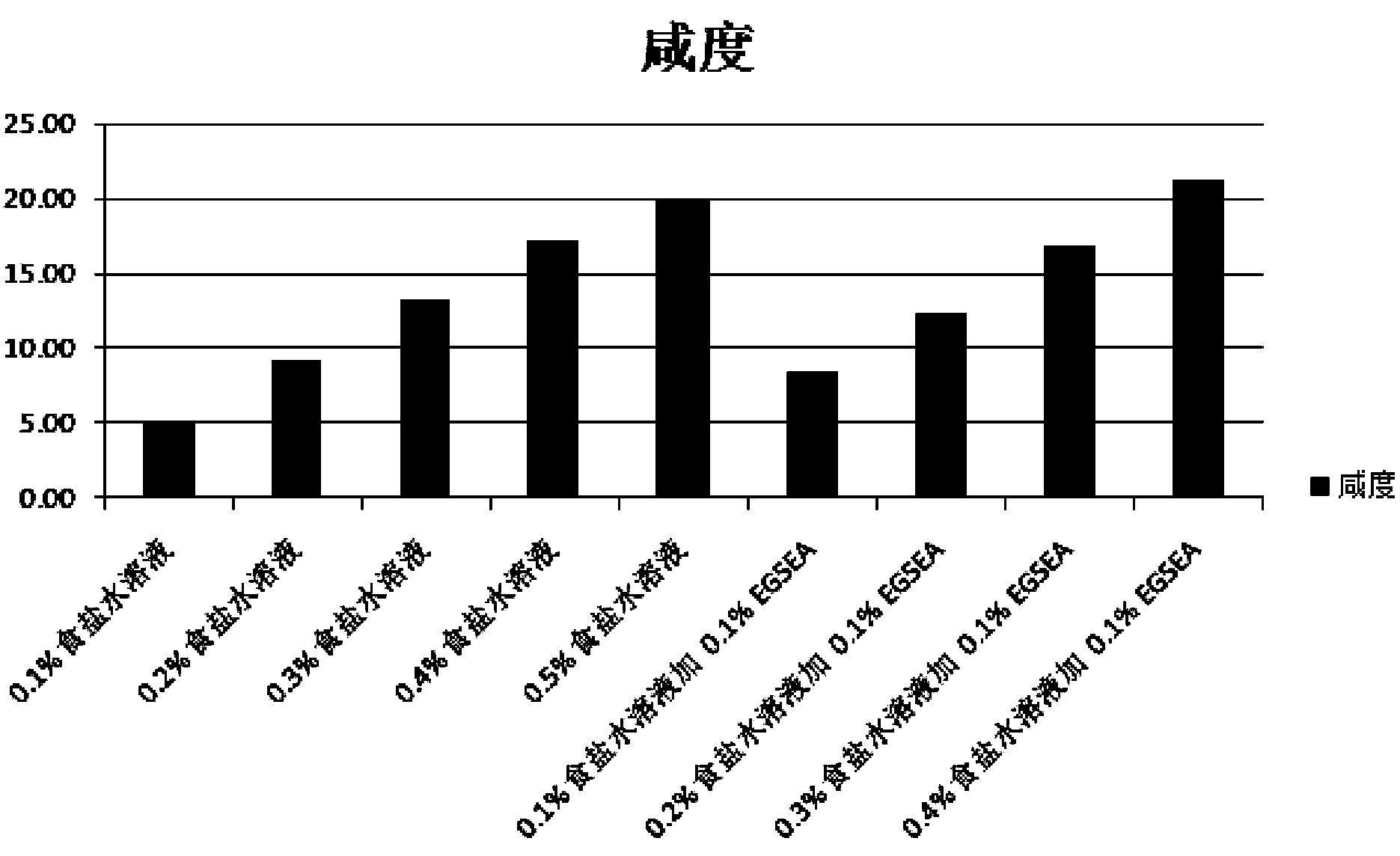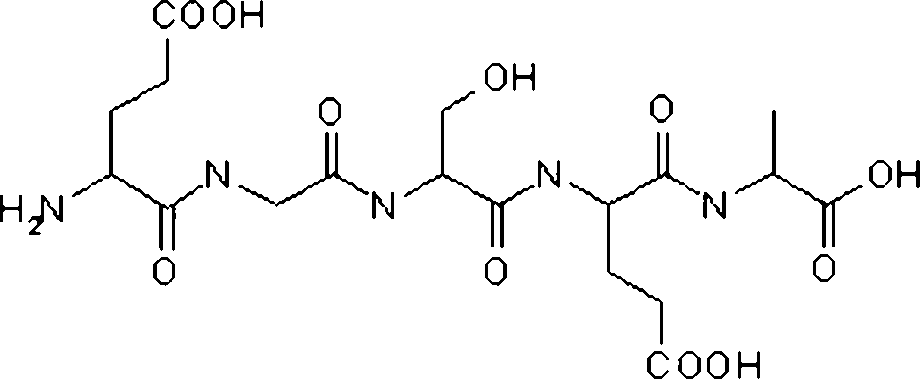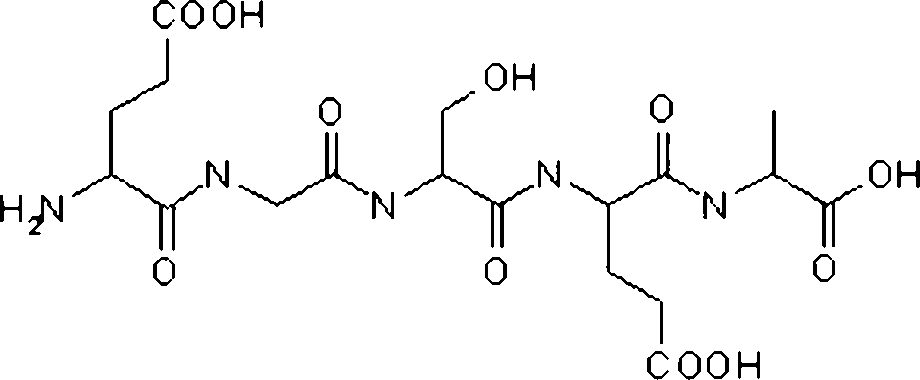Polypeptide capable of increasing saline taste, preparation method thereof and salt containing polypeptide
A peptide chain, fluorene methoxycarbonyl technology, applied in the field of natural synthetics, can solve the problems of decreased salty taste, increased bitterness of mixed salt, etc., and achieves the effects of reducing intake, low manufacturing cost, and enhancing perception
- Summary
- Abstract
- Description
- Claims
- Application Information
AI Technical Summary
Problems solved by technology
Method used
Image
Examples
Embodiment 1
[0056] Example 1: Functional measures experiment of the patented polypeptide (hereinafter referred to as "EGSEA")
[0057] Taking 0.1%, 0.2%, 0.3%, 0.4% and 0.5% saline solutions as references, the salinity of 0.1% saline is set at 5, and the salinity of 0.5% saline is set at 20, and then ten tasters compare the The salty taste of four mixtures of 0.1% saline solution plus 0.1% EGSEA (weight ratio), 0.2% saline solution plus 0.1% EGSEA, 0.3% saline solution plus 0.1% EGSEA and 0.4% saline solution plus 0.1% EGSEA was evaluated. test see attached figure 1 shown. Results: After adding 0.1% EGSEA to 0.2% saline solution, the saltiness of the solution increased, approaching that of 0.3% saline. After adding 0.1% EGSEA to 0.3% saline solution, the saltiness of the solution increases, approaching that of 0.4% saline. After adding 0.1% EGSEA to 0.4% saline solution, the salinity of the solution increases, exceeding that of 0.5% saline. Overall, 0.1% EGSEA has a salt reduction eff...
Embodiment 2
[0058] Embodiment 2: EGSEA is used for reducing salt instant noodles
[0059] 40 ordinary consumers (20 males, 20 females, aged 18-50 years old) participated in the experiment. These tasters had never received any training. For comparison, each consumer sat in a single room and tasted, and each person was provided with The four sample noodles are (1) ordinary instant noodles without salt reduction, (2) 30% salt reduction and adding 0.05% EGSEA; (3) 30% salt reduction and adding 0.1% EGSEA; (4) 30% salt reduction And add 0.5%EGSEA. They were asked to rate the acceptance of the four sides, with 1 being the lowest and 10 being the highest. As a result, most consumers could not tell the difference in taste and saltiness between instant noodles with 30% salt reduction plus 0.1% EGSEA and instant noodles without salt reduction.
[0060] sample
Embodiment 3
[0061] Embodiment 3: EGSEA is used for reducing salt chicken essence
[0062] 40 ordinary consumers (20 males, 20 females, aged 18-50 years old) participated in the experiment. These tasters had never received any training. For comparison, each consumer sat in a single room and tasted, and each person was provided with Two samples of chicken bouillon soup, namely (1) ordinary chicken bouillon soup without salt reduction, (2) chicken bouillon soup with 30% salt reduction and 0.1% EGSEA added. They were asked to compare the acceptance of the two soups. As a result, most consumers could not tell the difference in taste and saltiness between the two chicken bouillon soups.
[0063] Raw material name and specification
PUM
 Login to View More
Login to View More Abstract
Description
Claims
Application Information
 Login to View More
Login to View More - R&D
- Intellectual Property
- Life Sciences
- Materials
- Tech Scout
- Unparalleled Data Quality
- Higher Quality Content
- 60% Fewer Hallucinations
Browse by: Latest US Patents, China's latest patents, Technical Efficacy Thesaurus, Application Domain, Technology Topic, Popular Technical Reports.
© 2025 PatSnap. All rights reserved.Legal|Privacy policy|Modern Slavery Act Transparency Statement|Sitemap|About US| Contact US: help@patsnap.com



